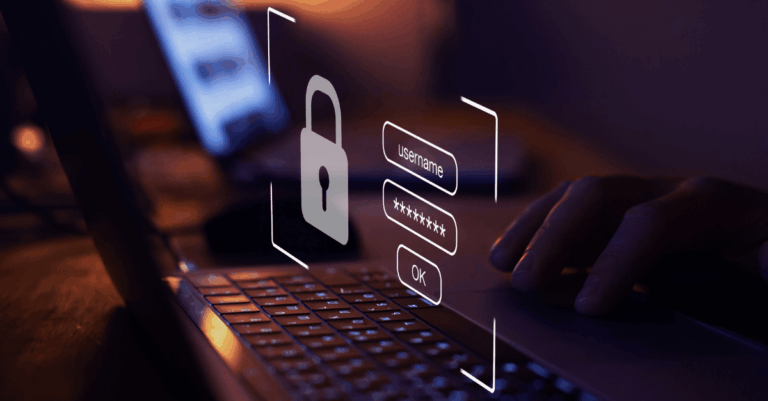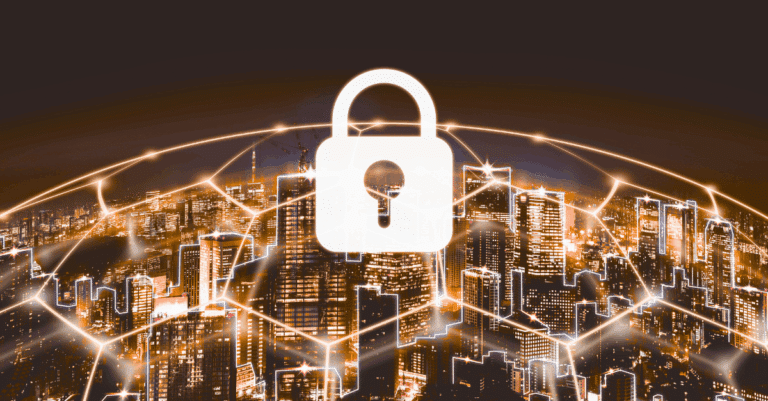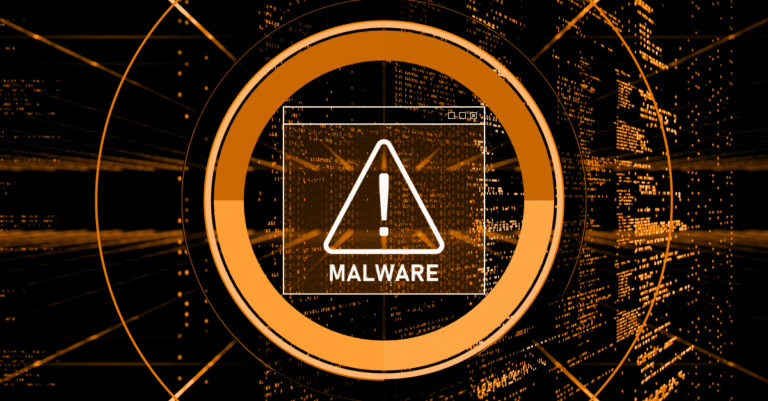How many hats can one head hold?
That’s the question when you run a small business. You probably find yourself juggling operations, customer service, finances…and security.
You’re responsible for safeguarding sensitive data like customer information, personal data, and even credit card numbers. In today’s digital-first world, a single data breach or security incident could cost you your reputation, customers, and thousands in recovery costs.
But here’s the good news: preventing a data breach doesn’t require a massive IT department or enterprise budget. It just takes the right strategy and a proactive mindset against everyday cyber threats.
TechKnowledgey partners with Indiana-based businesses to do just that. Our protection hardens businesses against data breaches and reduces potential risks. This guide lays out the key steps to help you protect what matters most.
Why Small Businesses Are Big Targets
Many small business owners assume they’re “too small to hack.” In reality, almost half of all small businesses have been attacked. Why? Because hackers know that SMBs often lack the tools and training to stop them. Combine that with the personal data they handle, and it makes SMBs a prime target.
The cost of a breach could be:
- Downtime
- Stolen customer data and lost trust
- Compliance fines from regulators or government agencies
- Damaged reputation
Here’s a recent example:
A customer of ours became compromised after buying an industrial vending machine from an unsecure vendor that used a Windows OS without telling us, their dedicated IT team. They were breached, and because of Techknowledgey the breach was mitigated, but it could have been a lot worse.
This was a big miss. We can’t manage what we don’t know about, but even with that working against us, we were able to protect the customer. Because we had multiple security layers in place, our team was able to isolate the breach, identify its scope, and prevent financial and data loss.
Was the machine itself secure? No. And because there was no threat monitoring, its OS got hacked and the vendor’s information was almost released to hackers.
There’s too much at stake. The question isn’t if you should invest in cybersecurity, but how.
Step 1: Train Your Team Like They’re on the Front Lines
(Because they are.)
Your employees are your first line of defense. Mistakes like clicking on a phishing email or using weak passwords open the door for attackers.
What to do:
- Run regular cybersecurity training. Cover phishing, secure browsing, password best practices, and mobile device safety. Make it practical and train employees to safeguard customer information and personal data every day.
- Simulate real attacks. Use phishing simulations to test and reinforce what your team learns.
- Foster a security-first culture. Make it normal to talk about security, celebrate good habits, and share updates on new threats.
This kind of training helps reduce the risk of social engineering attacks, where hackers trick employees into giving up confidential information.
Step 2: Lock Down Access with Smart Controls
Not everyone needs access to everything. The more people have access to sensitive information, the greater your risk.
What to do:
- Follow the principle of least privilege (PoLP). Only grant access to what employees need to do their jobs. Use role-based permissions. Segment access by department or job role, especially for systems that store credit card numbers or customer information.
- Disable old accounts. Remove access for former employees and unused third-party vendors.
Restricting access can stop unauthorized access and prevent breaches caused by gaining access to critical systems.
Step 3: Strengthen Login Security (Beyond Passwords)
Usernames and passwords are no longer enough. One stolen password can bring down your whole system.
What to do:
- Enforce strong password policies. Require 12+ characters, symbols, and regular updates. Keep sensitive files and shared folders password protected wherever possible.
- Use a password manager. Help employees generate and store secure credentials.
- Require multi factor authentication (MFA). Especially on email, admin accounts, and any remote access.
Strong login security is a core security measure that protects your business from common attacks.
Step 4: Fortify Your Network and Devices
From unsecured Wi-Fi to outdated firewalls, weak infrastructure is low-hanging fruit for hackers.
What to do:
- Secure your Wi-Fi. Use a strong WPA2 or WPA3 password and hide your SSID.
- Install firewalls and EDR. Protect your network perimeter and endpoints from unauthorized access and evolving cyber threats.
- Keep all software updated (ex: Windows 10 end of support)
- Apply patches to your OS, apps, and hardware firmware regularly.
- Set up VPNs for remote workers. Secure remote access to your network.
These actions help protect both financial information and personally identifiable information, including customer information you rely on daily.
Step 5: Encrypt, Backup, and Plan for the Worst
Data security keeps hackers out and limits damage if they get in.
What to do:
- Encrypt sensitive data. Protect files both at rest and in transit, especially when they include personal data or credit card numbers.
- Automate your backups. Store encrypted, password protected backups offsite or in secure cloud environments.
- Have an incident response plan. Create a step-by-step process for what to do in case of a breach or security incident. Test it.
This helps with breach prevention and protects confidential information from loss. For general disasters, consider a business continuity plan with contingencies for other outcomes.
Step 6: Keep an Eye on Your Ecosystem
You can do everything right, but one insecure vendor or outdated integration can still expose your data.
What to do:
- Audit third-party vendors. Ensure your partners follow strong cybersecurity standards for systems that may store customer information, personal data, or credit card numbers.
- Monitor user activity 24/7. Track access and flag unusual behavior.
- Conduct security assessments. Run audits and penetration tests regularly to find and fix weaknesses.
Monitoring vendors is essential when your systems may contain credit card numbers or social security number data. In regulated situations, a confirmed breach could also require notifying affected customers and, in some cases, government agencies.
Recap: Your Small Business Data Protection Checklist
Here’s a quick-hit list you can reference:
- Train employees to handle customer information and personal data correctly.
- Keep critical files password protected with MFA and strong password policies.
- Allow minimal access controls based on job roles. Don’t hand out admin rights like candy!
- Stay up-to-date with software versions and a secure Wi-Fi.
- Set up firewalls, EDR, and VPN for remote work.
- Offsite backups should be password protected and encrypted.
- Have an incident response plan in place, ready for any security incident (and related notifications to government agencies if applicable).
- Don’t neglect vendor security reviews and regular audits (especially where credit card numbers may be processed).
FAQs
1) What’s the main cause of breaches?
- Phishing and social engineering
- Weak or reused passwords, no MFA
- Unpatched software and misconfigured cloud
- Lost or stolen devices without encryption
- Third-party vendor failures
2) I’ve already been breached. How do I minimize the damage?
- Isolate affected systems and take them offline.
- Call your MDR or incident response team.
- Preserve logs and evidence. Don’t wipe devices.
- Rotate passwords, enable MFA, revoke tokens and keys.
- Patch exploited flaws and exposed ports.
- Restore from known-good, password protected backups.
- Notify affected customers and government agencies as required.
- Monitor closely for reinfection and unusual activity.
3) What does MDR mean?
MDR stands for Managed Detection and Response. It delivers 24/7 monitoring, threat hunting and rapid containment.
It pairs human analysts with EDR tools on your endpoints. The goal is to spot attacks fast and stop them before damage spreads.
You Don’t Have to Do This Alone
TechKnowledgey helps Indiana-based small businesses lock down their systems, train their teams and sleep better at night. We’re a managed IT services provider that monitors your systems around the clock.
Whether you need help building your security stack or want a second opinion on your current setup, we’re here to help.
Let’s protect what you’ve built. Contact us today for a consultation.






